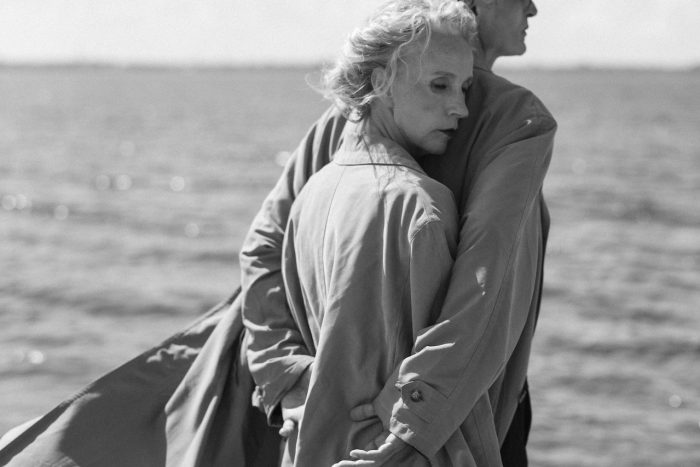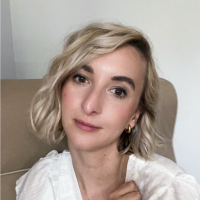Throughout history, partnerships were business transactions like any other.
The goal was to make the best financial/genetic choice to please our families and expand our bloodlines. As we’ve evolved, partnership became about our own sovereign decision based on love and compatibility, which is essentially what we are celebrating on February 14th. But our ancestors did not leave us any tools to navigate this kind of union, which is why we struggle so much to keep the romance alive. With endless choices at the touch of an App and divorce becoming less and less taboo, what does it really take to make a long-term relationship work?
As a relationship coach, the way I see it is we have one major hurdle to overcome if we want to evolve into this new paradigm. As the title of this article might suggest, this involves looking within, but perhaps not in the way you may think. It’s true that self-love is a foundation for a solid partnership and that it takes two healthy people who are committed to putting in the effort. But if I had to boil it down to one skill, it would be this: not taking things personally.
This is easier said than done, but time and time again this is what my clients’ big revelation is. Marriage was a lot easier to navigate when it wasn’t personal, when it was about two people making the best of their situation. Falling in love was a bonus, and at the very least couples aimed to grow fond of one another. When we were given free choice, the stakes got raised and the pool of options expanded. Not to mention, we live longer as a species. There is a big difference between “till death do us part” being 15 or 50 years.
So how do we expand our consciousness to accommodate modern relationships? When love matches became the norm, suddenly we had emotional skin in the game. The “failure” of the relationship became a personal failure. Being in partnership became a new kind of status symbol, one that says, “look at me, I’m lovable.” So, we internalized that our partner reflects our deepest worth, and each failed relationship chips away at our own value. Knowing what we know about the human psyche, it’s not surprising that we ended up here, but now it’s time to dig ourselves out.
The best tool I have ever come across to aid in this process is Human Design. This system creates a unique map based on our date, time, and place of birth, which describes in fine detail who we are and how we operate. The chart shows us our unique needs, which varies drastically from person to person. We can finally see that when our partner behaves in certain ways it’s not to spite us; it’s just who they are.
The best example I have of this is something that I have seen time and time again when working with people and in my personal life. One of the key factors that Human Design reveals is our decision-making process. There are those of us for whom decisions are quick and straight-forward. And there are people for whom decisions take longer and go through a more complex processing system. Neither one is “good” or “bad”; it’s just what is. So, for the people who make decisions quickly, it seems inexplicable that others may need more time. This gets especially hairy when it comes time to make big decisions about the relationship itself.
I ran into this exact dilemma in my first marriage. I am a quick decision maker and within six months of meeting my partner I was clear that I wanted to move in with him. He has a slower process and needed more time to think about it. I saw his hesitation as a personal affront to me. Instead of giving him space, I pushed harder. I essentially asked him to go against his nature to prove to me (and the world) that he loved me. He relented and we moved in, but it was bittersweet. In fact, this cast a shadow over the rest of our relationship because I assumed it was a shortcoming of mine that made him unsure. It’s these kinds of assumptions that prevent us from truly connecting. Ultimately our marriage ended after only five years because we did not have a foundation of mutual respect. I know now that forcing him to do something against his will was never going to make me feel safe and secure in our relationship.
Another dilemma I run into frequently is that we are primarily attracted to those who are different than us. I am not talking about surface-level differences; I’m talking about charts. For example, there are those of us who have a lot of free-flowing energy and those of us who are much more focused with a finite amount of energy. These two types of people are attracted to one another, which can eventually cause a lot of resentment. I myself have been in a partnership like this, and without the awareness it was often volatile. My energy felt like it was taken for granted, and whenever his focus was taken away, I lashed out. It was a relationship of extremes, which was not a way to live a healthy and harmonious life.
Ultimately, I can reflect and see how I was helpless in the dysfunctions I am describing. Human Design helped me to pull back the curtain on what was going on below the surface and forgive myself and my partners for what went on. When we see how different we all are, we can see that it’s not personal. It truly is such a relief.
One of the ways in which we are conditioned from a young age is believing that we are responsible for each other’s feelings. So, internalizing the newfound wisdom that Human Design offers can take some time. Once we do, it’s like being set free from prison. Your self-worth is no longer attached to a romantic partner but finding love can become fun and exciting again. Valentine’s day can become a celebration instead of a competition. Let’s appreciate that we have the freedom of choice and that we now have a love language to create the kind of meaningful connections that our ancestors could only dream of.
~
Please consider Boosting our authors’ articles in their first week to help them win Elephant’s Ecosystem so they can get paid and write more.












Read 0 comments and reply